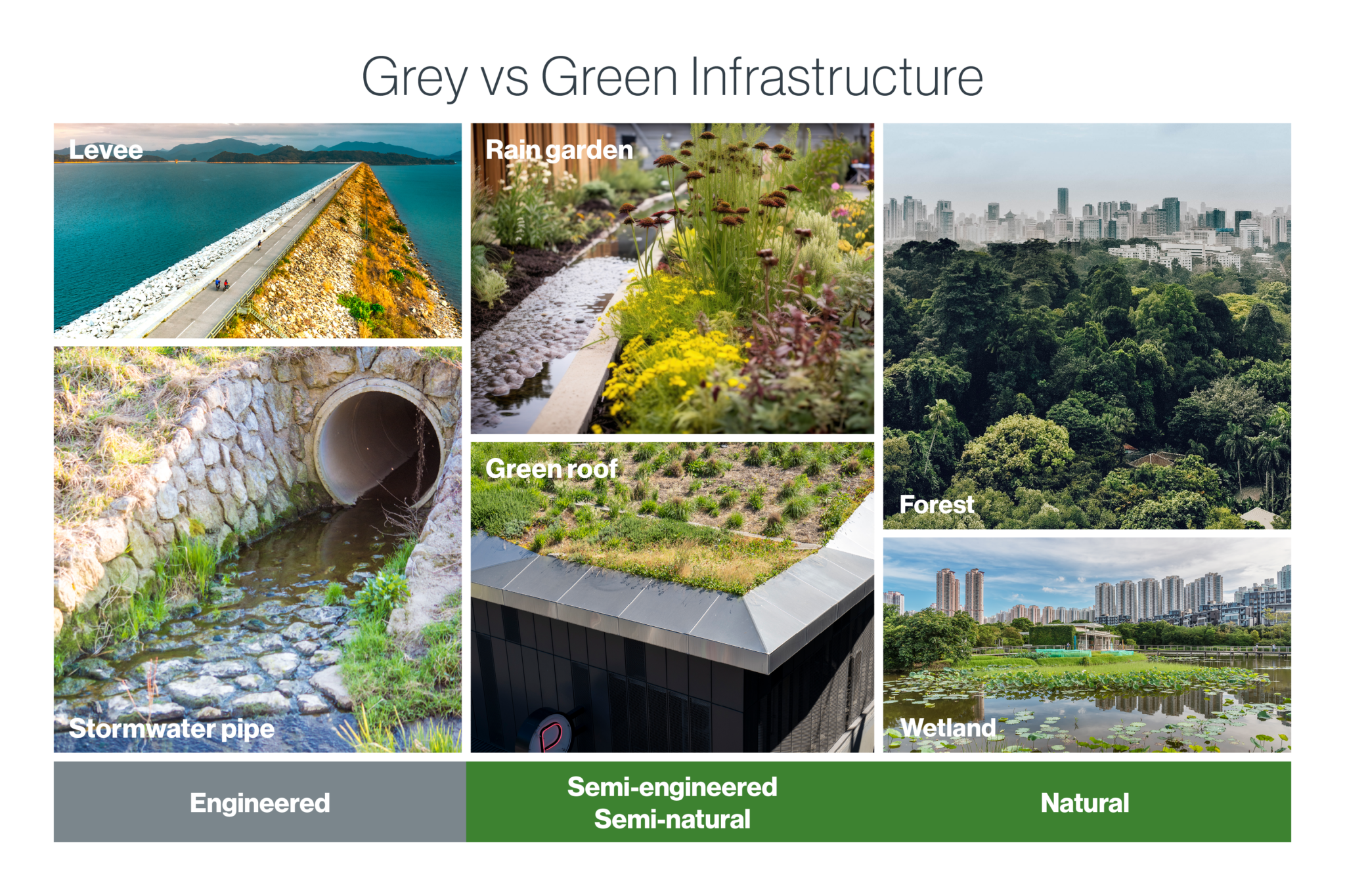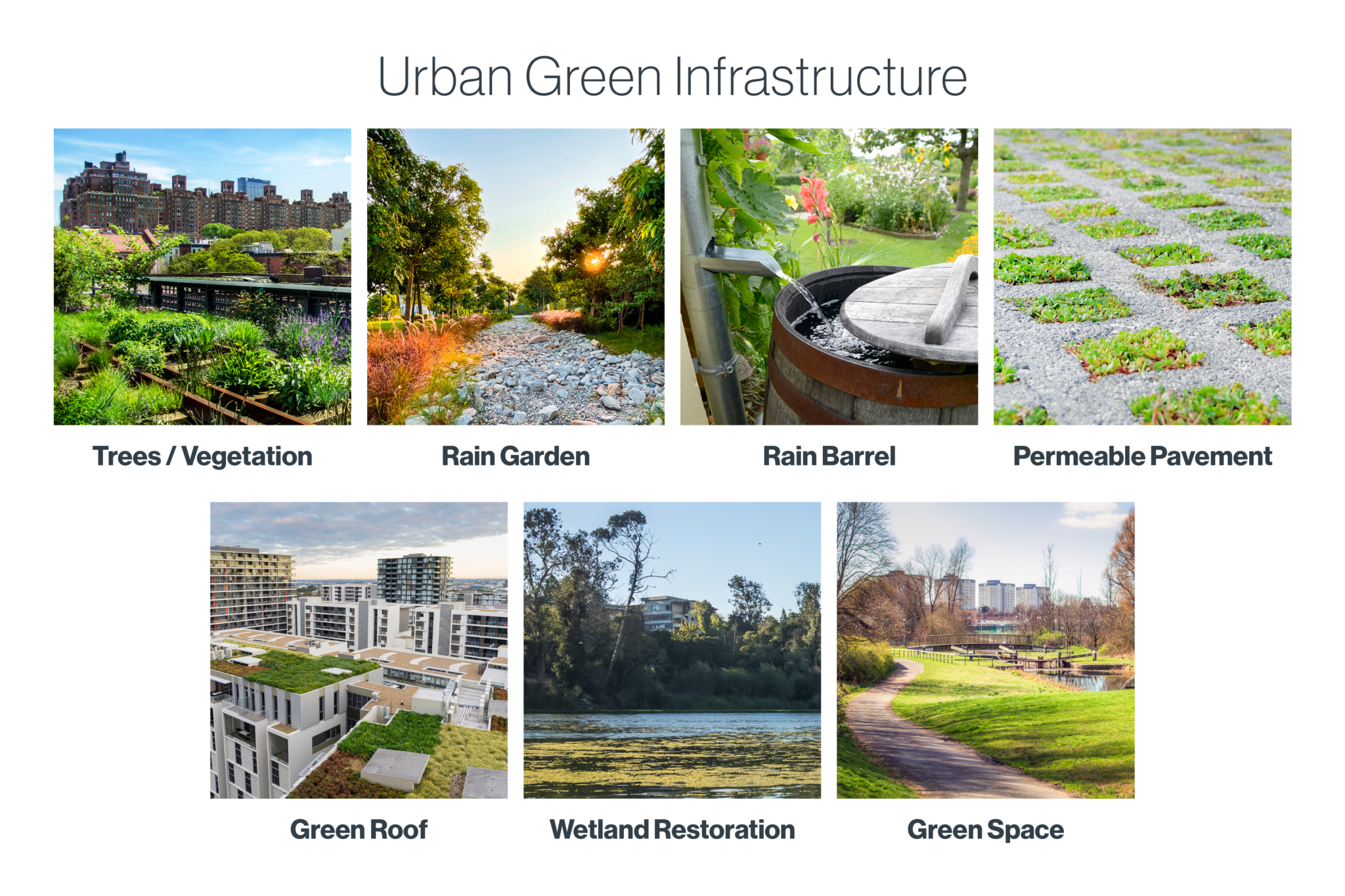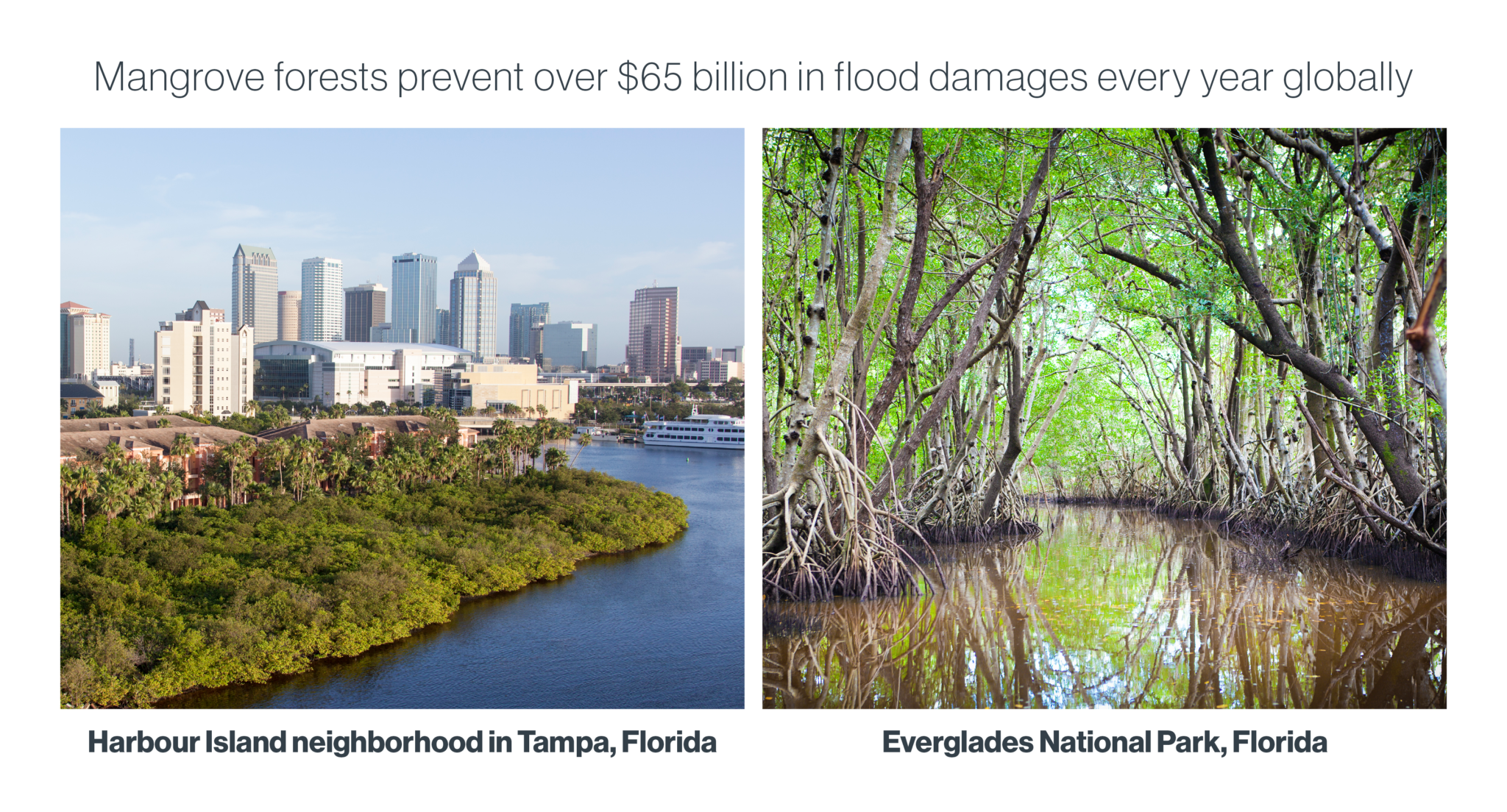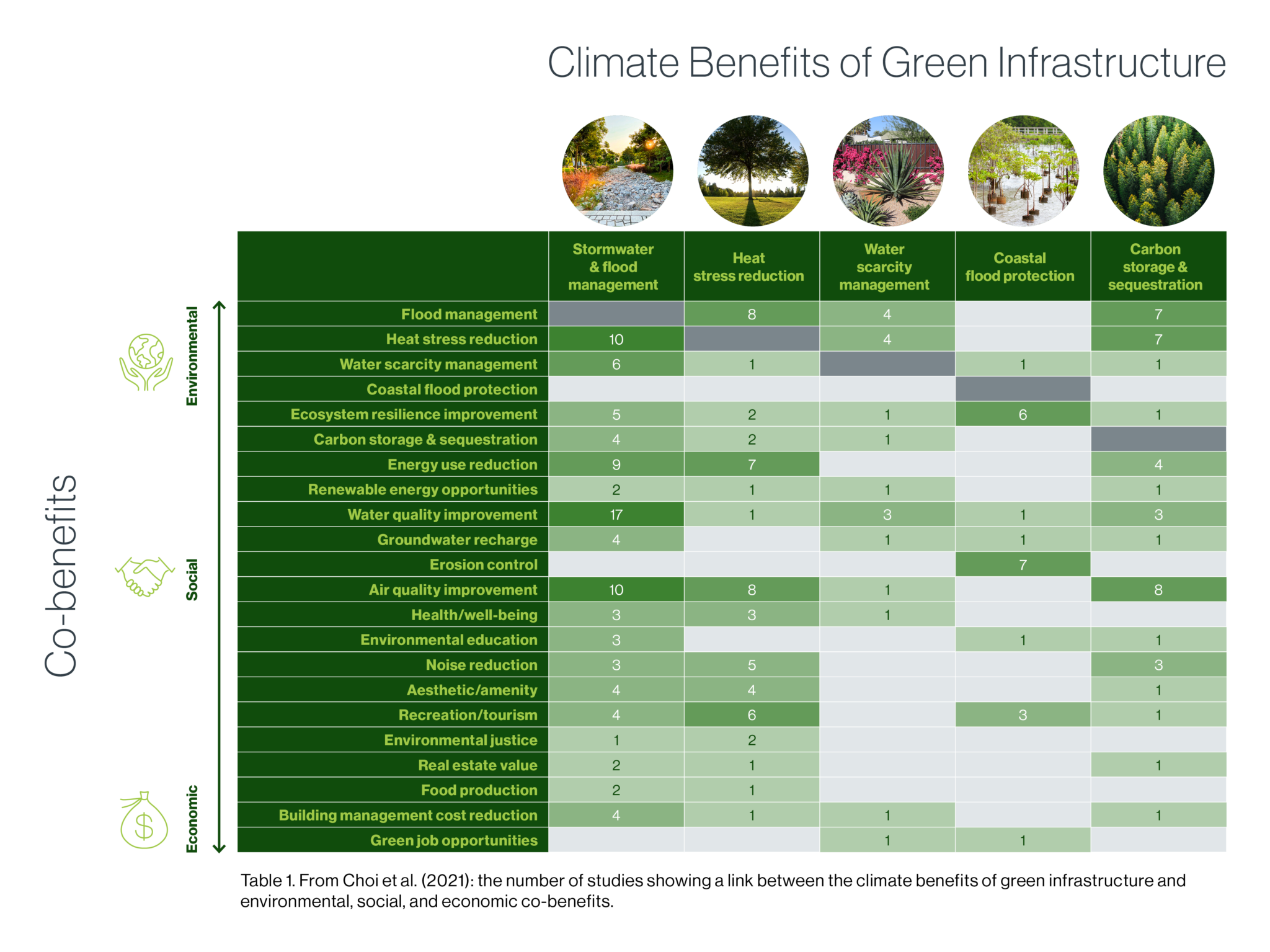Our industry is engaged in an important dialogue to improve sustainability through ESG transparency and industry collaboration. This article is a contribution to this larger conversation and does not necessarily reflect GRESB’s position.
On August 8, 2023, the coastal town of Lahaina, Hawaii, was tragically wiped off the map by a raging wildfire that took the lives of nearly 100 people.[1] In an astonishing sequence of events that unfolded within a mere few hours, the wildfire incinerated more than 2,000 buildings and 1,000 businesses, upending the lives of Lahaina’s 13,000 permanent residents. In its wake, the wildfire caused an estimated USD 5.5 billion dollars in damage.[2] It is the deadliest U.S. wildfire since 1881.[3]
As our planet warms and climate change impacts intensify, such wildfires are becoming more common. Between 1984 and 2015, the U.S. witnessed a doubling in the number of large western wildfires, driven by climate change-induced heat and drought, as reported by the National Oceanic and Atmospheric Administration (NOAA).[4]
However, there’s a vital factor often underestimated: the role of green infrastructure in mitigating impacts and building resilience in the face of climate hazards. Though climate change exacerbated the Lahaina wildfire, most of the damage was due to highly flammable, non-native grasses that grow in abandoned sugar cane plantations surrounding Lahaina.[5] These grasses cover 25 percent of Hawaii and have dramatically increased the frequency, spread, and severity of wildfires in the state.[6][7]
Local scientists and politicians were aware of this issue, with Hawaii’s Governor, Josh Green, emphasizing just seven months before the Lahaina wildfire the pressing need for adequate funding to address land management. He aptly stated, “As the economic benefits of invasive species reduction and watershed protection have been repeatedly proven by studies to outweigh the costs, additional investment in these programs is warranted. As climate change decreases fresh water supplies, increases the rate of severe storms and flooding, as well as increases the risk of wildfire, the importance of these programs continues to heighten.”[8]
One of the key questions that arises as we seek to learn from this tragedy is: how can we prioritize green infrastructure to save lives, structures, and economies from future devastation? In this article, we delve into the importance of green infrastructure for climate resilience in the built environment. We focus on the climate resilience benefits of green infrastructure, important co-benefits, barriers around financing and knowledge, and guidance for commercial real estate.
The power of green infrastructure for climate resilience in the built environment
As we confront the challenges posed by climate change and brace ourselves for more extreme weather events, we must recognize green infrastructure as an indispensable ally. In a scholarly paper by Choi et al. (2021), green infrastructure is defined as “a hybrid network of natural, semi-natural, and engineered features within, around and beyond urban areas at all scales, which is planned and managed to provide multiple ecosystem services and benefits”.[9] The European Commission uses a similar definition: “A strategically planned network of natural and semi-natural areas with other environmental features, designed and managed to deliver a wide range of ecosystem services, while also enhancing biodiversity”.[10] Both definitions get to the heart of the concept, making it clear that a well thought out combination of natural and engineered systems provides real world benefits to the built environment.

In the commercial real estate sector, green infrastructure is a familiar tool for managing stormwater and mitigating the growing threat of flooding. As climate change leads to more frequent and severe flooding events, the importance of trees, vegetation, and semi-engineered solutions like rain gardens continues to rise.[11][12] In recent years, the concept of “sponge cities” has gained momentum as a global movement and practice. The approach centers on leveraging the sponge-like qualities of green infrastructure to combat climate-related urban flooding.[13]

In New Orleans, green stormwater management strategies have been a critical component to improving climate resiliency. As part of the city’s recovery from disastrous flooding following Hurricane Katrina in 2005, residents and community organizations led the way in adding green infrastructure that takes pressure off the city’s aging pipes, pumps, and other gray infrastructure during storm events.[14] One group of community organizations reported earlier this year that their green infrastructure projects completed since 2013 now provide nearly USD 6 million in flood regulation benefits to communities annually, adding nearly 200,000 gallons of stormwater retention capacity.[15]
Green infrastructure can also be used to describe the benefits and services natural ecosystems provide at a community or regional scale (e.g., forests and wetlands). Some of the most powerful ecosystems for climate adaptation include forests, rivers and floodplains, lakes and wetlands, sand dunes, and urban green spaces.[16] Many of these ecosystems are also proficient in carbon sequestration (i.e., climate mitigation), with tundra, seagrass meadows, mangrove forests, and salt marsh ecosystems containing the highest carbon stores.[17]

Consider mangroves and coastal tree and shrub ecosystems, that not only absorb carbon, but act as a natural buffer between tropical storms and coastal communities. With an aerial root and canopy structure, mangroves help prevent flood and wind damage by reducing the intensity of waves, absorbing excess water, and slowing wind speeds.[18] In Florida, mangroves were estimated to offer USD 1.5 billion in flood protection from 2017 Hurricane Irma, reducing property damage by around 25 percent and safeguarding over 600,000 people.[19] Globally, mangroves prevent over USD 65 billion in flood damages every year.[20]
To address growing wildfire risk in Hawaii, adopting a regional-scale approach to green infrastructure will be paramount.[21] Guidance from the County of Maui emphasizes the removal of invasive grasses and the restoration of native ecosystems, which naturally exhibit greater resistance to fire.[22] Researchers are also exploring the efficacy of green fire breaks (or green strips) that would focus on native, inflammable, and water-rich species, helping to prevent fires from reaching urban areas.[23]
In drought-prone regions, green infrastructure serves as a vital defense against extreme heat, the leading cause of natural disaster-related fatalities in the U.S.[24] Last summer, Phoenix experienced a record 31 consecutive days with temperatures at or above 110°F, with heatwaves projected to worsen.[25] Mayor Kate Gallego emphasizes the crucial role of trees in cooling streets and enhancing walkability. Phoenix has ambitious plans to plant 20,000 trees in 25 neighborhoods by 2030, aiming for equitable tree canopy coverage across the city.[26]
Co-benefits of green infrastructure

In 2022, Los Angeles County opted not to remove the concrete channels throughout the Los Angeles River as part of the new LA River Master Plan. This decision drew criticism from local nonprofit organizations, who argue that the current focus on flood control neglects the river’s broader potential resilience benefits. They emphasize that a natural river would not only achieve flood management but also provide additional services around urban cooling, outdoor recreation, and health and well-being.[27]
Unlike gray infrastructure, the living, growing, and regenerative nature of green infrastructure makes way for a wide array of advantages beyond climate resilience. In a 2021 review, researchers conducted a comprehensive analysis of various climate benefits of green infrastructure and their connections to different co-benefits (see Table 1 below). From this analysis, we can see that the co-benefits of green infrastructure span all three pillars of sustainability: environmental, social, and economic. Environmental co-benefits like ecosystem resilience improvement are complemented by social and economic benefits related to air quality, health and well-being, aesthetics, recreation, and building management costs.[9]

‘Carbon storage and sequestration’ and ‘energy use reduction’ stand out as notable co-benefits of green infrastructure, particularly when it comes to trees and forests. This presents a unique opportunity for real estate companies striving to meet greenhouse gas emissions targets, as investments in green infrastructure can create synergies between climate mitigation, climate adaptation, and cost-reduction objectives. Furthermore, they align with goals related to biodiversity conservation, employee well-being, and increasing real estate values.
Financing and knowledge barriers
These synergies aside, funding is limited at a global scale to support green infrastructure projects for climate adaptation. In the context of climate finance, “nature-based solutions” is the predominant terminology, which is a similar concept to green infrastructure.[28] In 2018 (the latest statistics we could locate), approximately USD 3.8–8.7 billion was put toward “nature-based solutions for adaptation”— this represented only 0.6–1.4 percent of total climate finance flows that year.[29] Private finance is especially limited, comprising only 14 percent of investment toward nature-based solutions compared to 86 percent from public financing.[30]
A top reason for this financing gap stems from lack of knowledge when evaluating the costs and benefits of green infrastructure in comparison to gray infrastructure alternatives. Many assessment tools and methodologies focus on the initial construction costs when choosing between gray and green approaches, thus disregarding each investment’s long-term lifecycle. Green infrastructure has been well studied in terms of its bio-geophysical performance, but research is further behind on accounting for social and economic benefits, especially for smaller scale projects.[31]
Yet, new frameworks are emerging to more comprehensively factor in the economic advantages of green infrastructure into decision-making processes.[32][33] For instance, recent findings from 2021, which utilized the Sustainable Asset Valuation Tool (SAVi tool) developed by the International Institute for Sustainable Development, reveal that green infrastructure can be up to 50 percent less expensive than gray infrastructure while delivering nearly 30 percent more value in the long term.[34]
Looking to the future, it is important not to let the complexity of valuing nature hinder the adoption of more green infrastructure. The lessons drawn from disasters like the Lahaina wildfire underscore the true value of green infrastructure. Such lessons often become evident only after a catastrophe has occurred, once the damage is already done.
In hindsight, the economic argument for green infrastructure in Hawaii is strikingly evident. University of Hawaii climate scientist Camillo Mora notes that managing invasive grasses, which played a role in the devastation of Lahaina, could surpass USD 1 billion in cost. This is almost 20 times greater than the USD 49 million in state and federal funding allocated this year for natural resource conservation and fire protection in Hawaii.[6] However, this expense pales in comparison to the USD 5.5 billion needed solely for the reconstruction of Lahaina, one of many Hawaiian communities at risk from wildfires.[2]
Takeaways for commercial real estate
From installing green roofs to restoring local ecosystems, green infrastructure offers real estate owners a versatile and cost-effective range of solutions to proactively mitigate climate-related financial risks (e.g., physical damage to assets, disrupted business operations, and increased insurance premiums).[9][35]
To protect properties and occupants from worsening climate impacts, owners should start with a resilience assessment to gauge vulnerability to climate hazards to identify the most effective green infrastructure strategies for climate adaptation. This could look like planting shade trees to combat extreme heat or installing rain gardens to alleviate flooding.
Furthermore, it is crucial to build a compelling business case for green infrastructure projects. These projects should be assessed in terms of their near-term installation costs as well as the added environmental, social, and economic co-benefits contributed over the long term, as shown in Table 1.
For commercial real estate, a significant benefit of green infrastructure is the enhancement of health and well-being, as proximity to nature can increase creativity, relaxation, and productivity among building occupants.[36] Additionally, the positive impact of nature on human health and aesthetics can translate into higher property values and rent premiums.[37] For example, CIM’s 888 Hope apartment complex in Los Angeles exudes urban greening with its private parks — a feature that has become a key selling point for the community.[38]
To help with planning green infrastructure solutions in your portfolio, we recommend referencing best practices, case studies, and emerging research on accurately valuing green infrastructure in decision-making processes. Some resources worth reviewing include the U.S. EPA’s Green Infrastructure Cost Benefit Resources, the Urban Land Institute’s 2017 report “Harvesting the Value of Water: Stormwater, Green Infrastructure, and Real Estate”, and the Natural Resource Defense Council’s 2013 report “The Green Edge: How Commercial Property Investment in Green Infrastructure Creates Value.”[32][39][40]
This article was written by Carli Schoenleber, Content and Engagement Specialist at Verdani Partners. Other contributors were: Dana Weiss, Kristen Wernick, Gabe John, Jamie Bemis, and Jackie Royds.
References
[1] Matthew N. (October, 2023). Maui officials identify 2 more people killed in Lahaina fire.
[2] Garcia J., Stojanovic S. (August, 2023). Maui’s displaced grow anxious as wildfire recovery drags on.
[3] Indursky J. (August, 2023) Lahaina Fires Leave Businesses And Livelihoods In Ruins.
[4] National Oceanic and Atmospheric Administration (July, 2023). Wildfire climate connection.
[5] Cavallier A. (August, 2023). Highly flammable grasses in Hawaii fueled spread of deadly Maui wildfires, experts say.
[6] Bush E. (August, 2023). Left unchecked, Maui’s nonnative grasses turned into wildfire fuel.
[7] Romero S., Kovalesky S. (August, 2023). How Invasive Plants Caused the Maui Fires to Rage.
[8] Hawaii Governor, Josh Green (January, 2023). State of Hawaii Program Memoranda.
[9] Choi C., Berry P., Smith A. (n.d.). The climate benefits, co-benefits, and trade-offs of green infrastructure: A systematic literature review.
[10] European Commission (n.d.). Green Infrastructure.
[11] Shao E. (July, 2023). How Is Climate Change Affecting Floods?
[12] Natural Resources Defense Council (July, 2022). Green Infrastructure: How to Manage Water in a Sustainable Way.
[13] Schlossberg T. (March, 2022). Turning Cities Into Sponges to Save Lives and Property.
[14] Grist (June, 2022). How New Orleans neighborhoods are using nature to reduce flooding.
[15] Earth Economics and Water Wise Gulf South, Healthy Community Services, Greater Tremé Consortium, Bunny Friend Neighborhood Association, New Orleans East Green Infrastructure Collective, and the Lower 9th Ward Homeownership Association. (March, 2023). The Benefits of Community-Driven Green. Infrastructure (Updated).
[16] Zanten V., Goizueta B., Brander G., Reguero L., Griffin B., Macleod R., Beloqui K., Midgley A., Garcia A., Jongman L., Brenden (May, 2023). Publication: Assessing the Benefits and Costs of Nature-Based Solutions for Climate Resilience: A Guideline for Project Developers.
[17] Svennevig B. (October, 2018). Top 5 most efficient ecosystems for carbon storage.
[18] Miranda J., Ishizawa O., Eriksson M., Del Valle A. (December, 2019). Mangroves protect coastal economic activity from hurricanes.
[19] Beck M., Nzerem K., Geselbracht L., Shepard C., Matthewman J., Thomas C., Narayan S. (n.d.). Valuing the Flood Risk Reduction Benefits of Florida’s Mangroves.
[20] Menéndez P., Losada I., Torres-Ortega S., Narayan S., Beck M. (February, 2020). The Global Flood Protection Benefits of Mangroves.
[21] American Planning Association (n.d.). Multihazard Planning Framework for Communities in the Wildland-Urban Interface.
[22] COUNTY OF MAUI (July, 2021). REPORT ON WILDFIRE PREVENTION AND COST RECOVERY ON MAUI.
[23] Strohecker, L. (March, 2021). Native plant firebreaks may be a tool to control wildfires.
[24] HSPH Harvard School of Public Health (June, 2022). Health-harming extreme heat, driven by climate change, on the rise.
[25] Clifford C. (August, 2023). Phoenix suffers a record 31 straight days of 110-degree highs, and more heat is on the way.
[26] Gallego, K. (April, 2023). Towards a More Resilient Phoenix: How One Desert City is Tackling Extreme Heat Challenges.
[27] Cortez L., Christiansen M., Pease K., Kjer T., Reznik B., D’Arcy A., Ganguly S., Mark R. (June, 2022). LA River Master Plan Update.
[28] Nature Based Solutions (n.d.). What is the Nature-based Solutions Initiative and what are nature-based solutions?
[29] Swann S., Blandford L., Cheng S., Cook J., Miller A., Barr R. (2021). PUBLIC INTERNATIONAL FUNDING OF NATURE-BASED SOLUTIONS FOR ADAPTATION: A LANDSCAPE ASSESSMENT.
[30] UNEP, WEF, ELD, Vivid Economics (May, 2021). State of Finance for Nature 2021.
[31] Cools J., Passel S., Oijstaeijen W. (April, 2020) Urban green infrastructure: A review on valuation toolkits from an urban planning perspective.
[32] United States Environmental Protection Agency (August, 2023). Green Infrastructure Cost-Benefit Resources.
[33] Wang M., Zhong X., Sun C., Chen T., Su J., Li J. (July, 2023). Comprehensive Performance of Green Infrastructure through a Life-Cycle Perspective: A Review.
[34] Nature-Based Infrastructure (October, 2021). How Can Investment in Nature Close the Infrastructure Gap?
[35] Urban Land Institute (n.d.). CLIMATE RISK AND REAL ESTATE INVESTMENT DECISION-MAKING.
[36] Stoner A., Loder A. (n.d.). Access to nature and the workplace.
[37] Pipitone N. (January, 2022). Green Space is Good for the Soul, and for Commercial Property Values, Too.
[38] CIM (n.d.). 888 at Grand Hope Park.
[39] Urban Land Institute (n.d.). Harvesting the Value of Water.
[40] Clements J., Juliana A., Davis P., Levine L. (December, 2013). The Green Edge: How Commercial Property Investment in Green Infrastructure Creates Value.